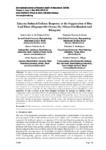Por favor, use este identificador para citar o enlazar este ítem:
http://www.alice.cnptia.embrapa.br/alice/handle/doc/1021319Registro completo de metadatos
| Campo DC | Valor | Lengua/Idioma |
|---|---|---|
| dc.contributor.author | SOUZA, A. C. A de | pt_BR |
| dc.contributor.author | CORTES, M. V. de B. | pt_BR |
| dc.contributor.author | SILVA, G. B. da | pt_BR |
| dc.contributor.author | SOUSA, T. P. de | pt_BR |
| dc.contributor.author | RODRIGUES, F. A. | pt_BR |
| dc.contributor.author | FILIPPI, M. C. C. | pt_BR |
| dc.date.accessioned | 2015-08-04T11:11:11Z | pt_BR |
| dc.date.available | 2015-08-04T11:11:11Z | pt_BR |
| dc.date.created | 2015-08-04 | pt_BR |
| dc.date.issued | 2015 | pt_BR |
| dc.identifier.citation | International Journal of Research Studies in Biosciences, v. 3, n. 5, p. 22-32, May 2015. | pt_BR |
| dc.identifier.uri | http://www.alice.cnptia.embrapa.br/alice/handle/doc/1021319 | pt_BR |
| dc.description | The effects of silicon fertilization and bioagents in suppressing leaf blast were studied in two greenhouse experiments using a susceptible upland rice cultivar, BRS Primavera. In the first experiment, the treatments consisted of four doses of SiCaMg (1,2,4 and 8 tons Si.ha-1) and four bioagent (Burkholderia pyrrocinia (Bp); Pseudomonas fluorescens (Pf); Trichoderma asperellum (Ta) and a mixture of the three bioagents (Bp+Pf+Ta), in addition to untreated controls. The most effective treatment was silicon fertilization at 2tons in combination with the three bioagents, which reduced leaf blast by 96%. A second experiment was conducted to study the defense mechanism involved in disease suppression. The treatments were organized in a randomized block design, with or without Si (0 or 2 tons Si) and bioagents (non-inoculated control, Ta or Bp+Pf+Ta). The combination of silicon fertilization (2 tons SiCaMg.ha-1) with T. asperellum or with a mixture of the three bioagents increased the activities of chitinase (CHI), β-1,3glucanase (GLU), peroxidase (POX) and phenylalanine ammonia-lyase (PAL) as well as the salicylic acid (SA) content in rice plants in the absence of the pathogen Magnaporthe oryzae. The mixture of the three bioagents in plants fertilized with 2 tons Si increased GLU enzyme activity and SA levels at 24 and 48 hours after infection of the plants challenged with M. oryzae. The activation of defense mechanism by combination of silicon fertilization with bioagent mixture could be an effective strategy for rice blast management. | pt_BR |
| dc.language.iso | eng | eng |
| dc.rights | openAccess | eng |
| dc.subject | Bioagente | pt_BR |
| dc.title | Enzyme-induced defense response in the suppression of rice leaf blast (Magnaporthe Oryzae) by silicon fertilization and bioagents. | pt_BR |
| dc.type | Artigo de periódico | pt_BR |
| dc.date.updated | 2015-09-24T11:11:11Z | pt_BR |
| dc.subject.thesagro | Arroz | pt_BR |
| dc.subject.thesagro | Oryza sativa | pt_BR |
| dc.subject.thesagro | Brusone | pt_BR |
| dc.subject.thesagro | Doença de planta | pt_BR |
| dc.subject.thesagro | Silício | pt_BR |
| dc.subject.nalthesaurus | Magnaporthe oryzae | pt_BR |
| riaa.ainfo.id | 1021319 | pt_BR |
| riaa.ainfo.lastupdate | 2015-09-24 | pt_BR |
| dc.contributor.institution | ALAN CARLOS A. DE SOUZA, UFLA; MARCIO VINICIUS DE C BARROS CORTES, CNPAF; GISELE BARATA DA SILVA, UFRA; THATYANE PEREIRA DE SOUZA, UFG; FABRICIO A. RODRIGUES, UFV; MARTA CRISTINA CORSI DE FILIPPI, CNPAF. | pt_BR |
| Aparece en las colecciones: | Artigo em periódico indexado (CNPAF)  | |
Ficheros en este ítem:
| Fichero | Descripción | Tamaño | Formato | |
|---|---|---|---|---|
| CNPAF2015.pdf | 363,52 kB | Adobe PDF |  Visualizar/Abrir |









